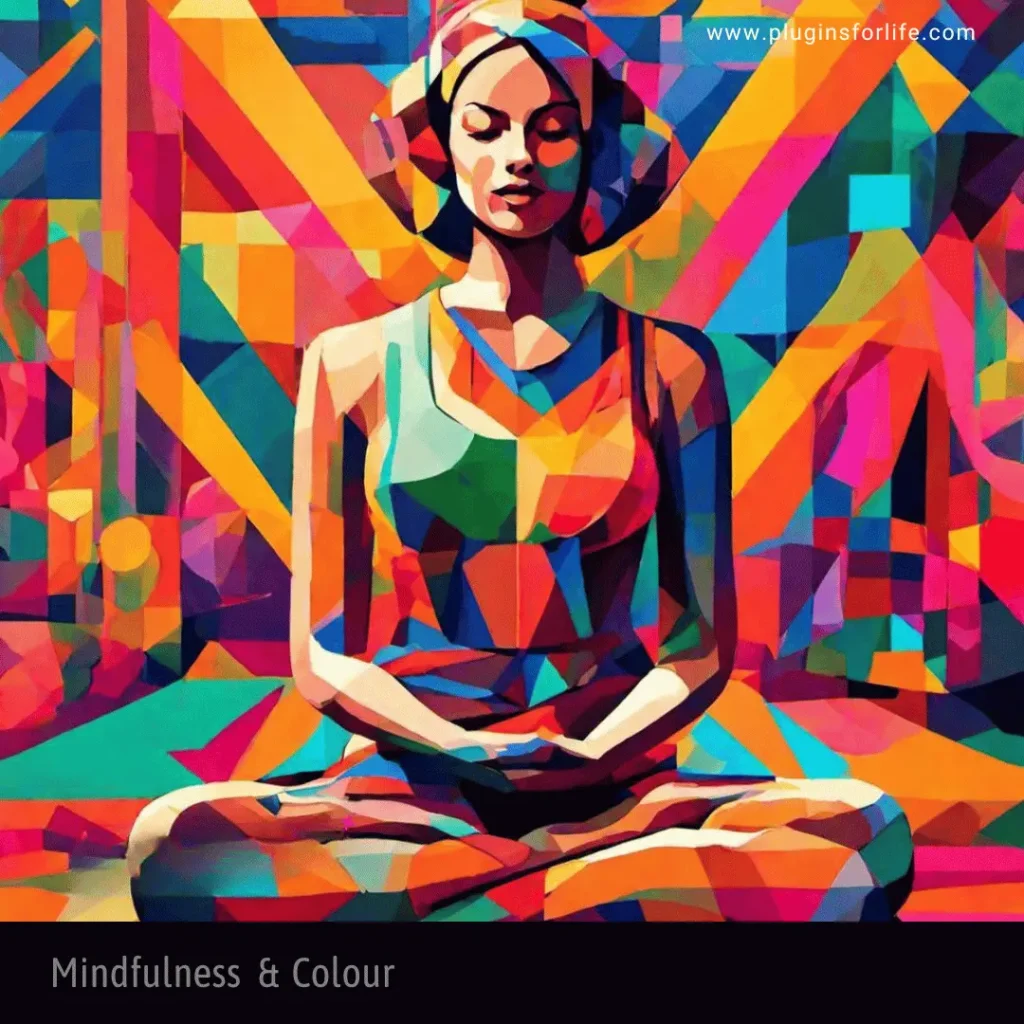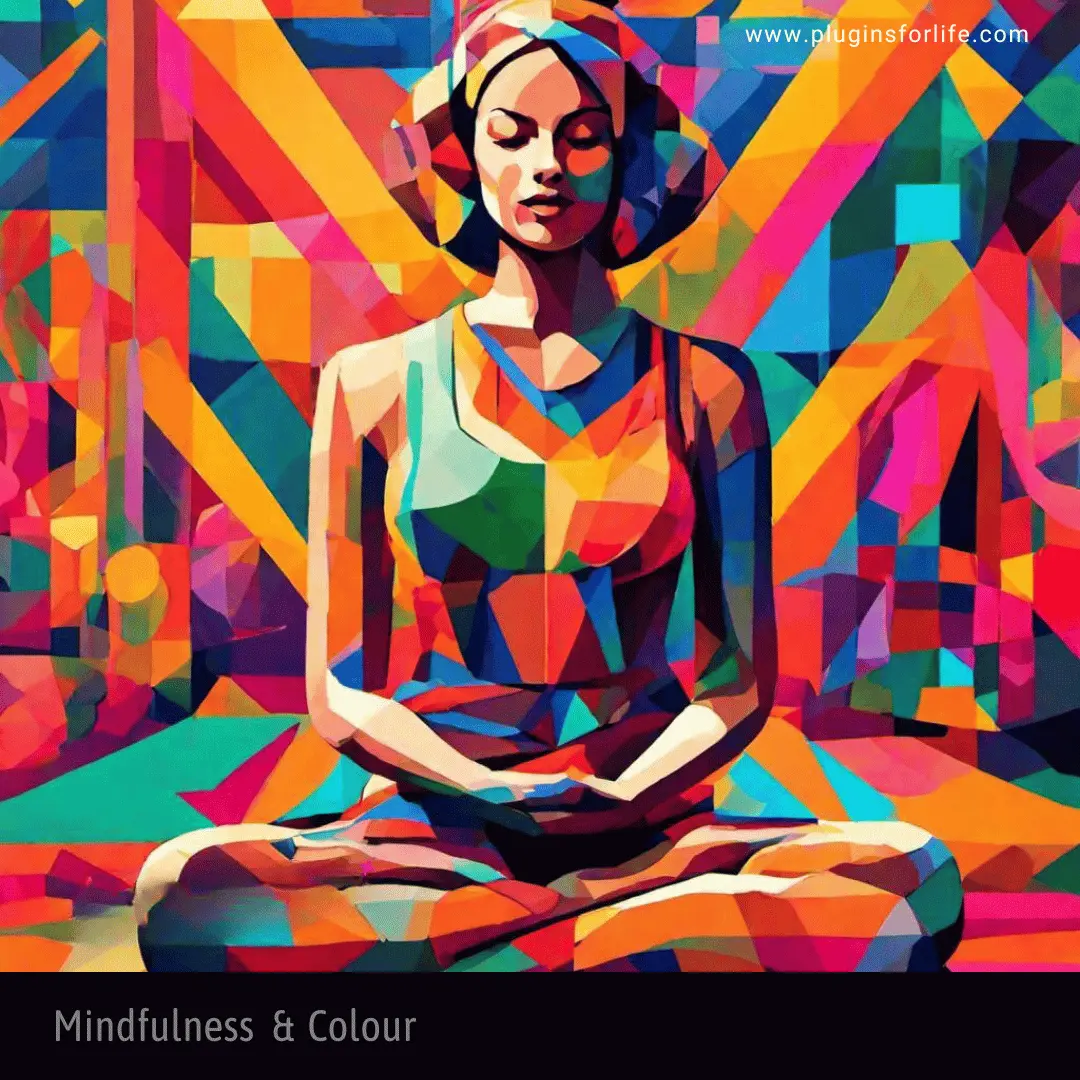Colors can serve as visual anchors that help bring your attention to the present moment. When you focus on a specific color, it becomes a point of focus that can aid in grounding your awareness.Different colors are associated with various emotions.Mindfulness and colours, when brought together, create a sensory experience that allows individuals to immerse themselves in the present moment, awakening a heightened awareness of the vibrant and ever-changing world around them.
Mindfulness involves observing emotions without judgment. By using colors that correspond to certain emotions, you can deepen your understanding of your emotional state during mindfulness.Incorporating colors as cues can help you remember to engage in mindfulness practices.
Seeing a particular color can prompt you to pause, take a breath, and be present.Colors can be used metaphorically in mindfulness practice. For instance, imagining negative thoughts as dark colors dissipating into lighter colors can symbolize letting go of negativity.

Table of Contents
What does research say about Mindfulness and Colours association
While research on the direct impact of colors in mindfulness might be limited, the principles of color psychology, sensory engagement, and personalization suggest that incorporating colors into mindfulness practices can be a valuable and effective tool. Remember that the effectiveness of color in mindfulness can vary from person to person, and the key is to explore what resonates with you and enhances your present-moment awareness.
You may want to dvelve into mindfulness anc come back and continue , Click here to learn about Mindfulness
The logical connection between Mindfulness and Colours
The logical connection between colors and mindfulness lies in the way colors can serve as tools to enhance, anchor, and deepen your experience of being present in the moment. While there might not be a direct scientific explanation for the connection, several principles and concepts including principles of attention, emotion, sensory engagement, and personalization contribute to the logical relationship between colors and mindfulness
- Visual Stimulation: Colors are visual stimuli that can capture your attention and engage your senses. Mindfulness encourages focusing on the present moment, and colors can provide a point of focus that supports this intention.
- Emotion and Perception: Colors are known to evoke emotions and influence perceptions. Certain colors are associated with calmness, energy, and other emotional states. Integrating these colors into mindfulness practices can amplify the emotional impact of your practice.
- Cognitive Anchoring: Associating colors with mindfulness practices creates cognitive anchors that link your mind to a specific state of mindfulness. Seeing a certain color can trigger your brain to shift into a mindful awareness mode.
- Visual Reminders: Colors act as visual reminders to engage in mindfulness practices. When you see a particular color, it can prompt you to pause, breathe, and refocus your attention on the present moment.
- Personalization and Engagement: Mindfulness is often most effective when tailored to individual preferences. Choosing colors that resonate with you personalizes the practice, making it more engaging and motivating.
- Multi-Sensory Experience: Integrating colors adds a multi-sensory dimension to mindfulness. Engaging multiple senses can deepen your connection to the present moment, enriching your overall experience.
- Creative Expression: Colors provide a creative outlet for expressing your mindfulness journey. Designing your practice with colors can make it more enjoyable and reflective of your unique experience.
- Positive Association: Repetitively associating a color with a mindful state can create positive associations. Over time, the color itself can trigger a sense of calm or presence.
- Attentional Focus: Using colors as points of focus during mindfulness exercises, such as breath meditation or body scans, can enhance your attentional focus and concentration.
- Symbolism and Metaphor: Colors can carry symbolic meanings that align with mindfulness concepts. For instance, using a bright color to represent awareness can symbolize the clarity and illumination of mindfulness.
How to – Mindfulness and Colours association activity
Objective: To enhance your mindfulness practice by incorporating colors as visual anchors, using them to deepen your present-moment awareness.
Materials Needed:
- A quiet and comfortable space
- Colored objects, such as colored pencils, markers, or objects of different colors
- Optional: A timer or meditation app
Steps:
- Preparation:
- Find a quiet space where you can sit comfortably without distractions.
- Gather your colored objects or materials. These could be colored pencils, markers, or objects like stones, beads, or flowers of various colors.
- Set Your Intention:
- Before you begin, take a few deep breaths to center yourself.
- Set an intention for the activity. This could be to enhance your present-moment awareness, practice focused attention, or simply to explore the visual world mindfully.
- Choosing a Color:
- Select one colored object to start with. This could be a colored pencil, marker, or any other object you’ve gathered.
- Observation:
- Hold the colored object in your hand or place it in front of you.
- Observe the color closely. Notice the hue, shade, and any patterns it might have.
- Engaging Your Senses:
- Pay attention to the sensory experience of holding the object. Feel its texture, weight, and temperature.
- If it’s a colored pencil or marker, notice the sensation as you grip it.
- Engage your sense of sight fully, focusing your attention on the color itself.
- Breath Awareness:
- As you continue observing the color, bring your attention to your breath.
- Notice the rhythm of your breath as you inhale and exhale.
- Use your breath as an anchor, allowing it to keep you grounded in the present moment.
- Exploration:
- Slowly shift your focus to the broader environment. Observe how the color of the object interacts with the surrounding space.
- If you’re using a colored pencil or marker, you can gently color a small area on a piece of paper and observe the color spreading.
- Mindful Presence:
- Throughout the activity, remind yourself to stay present and fully engaged with the experience.
- If your mind wanders, gently guide your attention back to the color and your breath.
- Exploring Other Colors:
- Once you feel ready, choose another colored object and repeat the observation and exploration process.
- Explore different colors one by one, noticing any variations in your experiences.
- Closing the Activity:
- Spend a few moments reflecting on your experience. Consider how focusing on colors impacted your mindfulness practice.
- Gently transition out of the activity and back to your regular awareness.
Download Template
CLICK TO DOWNLOAD COLOURING TEMPLATE
Summary
While the logical connection between colors and mindfulness might not have a single, definitive explanation, it’s Ultimately, the goal is to leverage colors as tools that aid in cultivating a deeper sense of presence, self-awareness, and well-being during mindfulness practices.
Ultimately, the goal is to leverage colors as tools that aid in cultivating a deeper sense of presence, self-awareness, and well-being during mindfulness practices.
Reference – Youtube Video
Amazon Link to buy mindfulness colouring book

FAQ’s – Mindfulness and Colours
How does colouring relate to mindfulness?
The repetitive and rhythmic movements involved in coloring can induce a meditative state, characterized by increased alpha brain wave activity. This altered brain state is akin to the mental state achieved during mindfulness meditation, where individuals experience a sense of calm and relaxation.
What is the colour for mindfulness?
Root Chakra (Muladhara): Red – The Root Chakra, located at the base of the spine, is associated with the color red. Meditating on the color red can help ground and stabilize your energy, promoting a sense of security and stability.
Sacral Chakra (Svadhishthana):Orange -The Sacral Chakra, located just below the navel, is associated with the color orange. Meditating on the color orange can enhance creativity, passion, and emotional balance.
Solar Plexus Chakra (Manipura):Yellow – The Solar Plexus Chakra, located in the upper abdomen, is associated with the color yellow. Meditating on the color yellow can boost self-confidence, personal power, and inner strength.
Heart Chakra (Anahata): Green -The Heart Chakra, located in the center of the chest, is associated with the color green. Meditating on the color green can facilitate love, compassion, and emotional healing.
Throat Chakra (Vishuddha): Blue -The Throat Chakra, located at the throat, is associated with the color blue. Meditating on the color blue can promote clear communication, self-expression, and authenticity.
Third Eye Chakra (Ajna):Indigo– The Third Eye Chakra, located between the eyebrows, is associated with the color indigo or deep blue. Meditating on the color indigo can enhance intuition, insight, and spiritual awareness.
Crown Chakra (Sahasrara): The Crown Chakra, located at the top of the head, is associated with the color violet or white. Meditating on the color violet or white can open your connection to higher consciousness and spiritual enlightenment.
During chakra meditation, practitioners often visualize these colors, focus on them, or use corresponding colored objects or imagery to help activate and balance the energy of each chakra. This practice is believed to promote physical, emotional, and spiritual well-being by aligning and harmonizing the chakras.
What are the three sacred colors?
Hinduism – Saffron , Red , Yellow
Buddhism – Blue , White , Red
Christianity – Purple , White , Green
What color calms the mind?
Research has shown that exposure to the color blue can lead to physiological changes associated with relaxation
